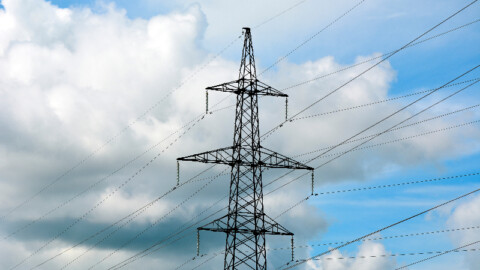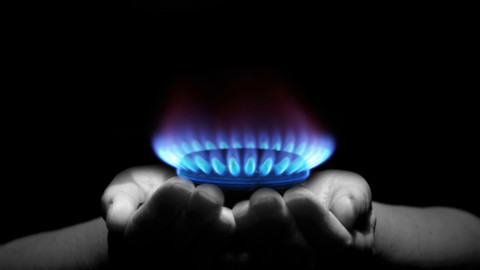Large buildings, like hospitals, use a considerable amount of energy as part of their day-to-day operations, so it makes sense that the managers of these facilities would be interested in looking at ways to reduce their consumption and improve their bottom line.
NSW Health recently engaged the services of leading environmental solutions provider, Veolia, through a range of Energy Performance Contracts designed to identify the key areas where they could reduce their energy consumption and make their buildings more energy efficient.
Energy efficiency is a key pillar of the modern energy industry – it’s widely regarded as “the first fuel”, and it’s the first step any organisation that is serious about reducing its carbon footprint needs to take on its journey to environmental sustainability.
Beyond the environmental benefits, improving an organisation’s energy efficiency is going to undoubtedly have an impact on its bottom line – after all, the cheapest kilowatt is the kilowatt you don’t use.
In NSW, the Office of Environment and Heritage provides funding for government agencies to make substantial energy savings to help meet NSW Government Resource Efficiency Policy (GREP) targets. The GREP includes measures, targets and minimum standards to drive efficiency in energy, water and waste and improve air quality.
A number of NSW local health districts have taken advantage of this funding, including Illawarra Shoalhaven Local Health District and Mid North Coast Local Health District, both of which engaged Veolia in Energy Performance Contracts (EPCs) to help them reduce their energy usage through a range of innovative measures.
According to Hector Herrero-Lopez, Veolia’s Business Development Manager for Energy Solutions, there are multiple benefits on offer when hospitals and health services providers take a closer look at their energy consumption – and how they can reduce it.
“Since hospitals are high energy-intensive facilities, the implementation of energy efficiency solutions allows us to deliver significant savings and also make a substantial contribution to the decarbonisation of the region,” said Mr Herrero-Lopez.
An additional benefit of bringing an external energy expert in on a contract basis is the fact that it allows health services providers to focus on their core business, rather than having to invest staff capital in energy upgrades.
And, according to Mr Herrero-Lopez, “When you bring passionate and like-minded teams together, good things start to happen.”
An energy-intensive environment
Hospitals are among the biggest energy consumers in the country. They are large facilities with very specific cooling needs; they operate 24 hours a day, seven days a week; and they utilise equipment that is particularly energy-intensive across all of their departments. So it’s no surprise that hospitals are the ideal environment in which to conduct an energy efficiency audit; and identify some serious potential savings.
For Danny Saunders, Project Manager Energy and Environmental Sustainability at Mid North Coast Local Health District, it was essential that the organisation take a closer look at their energy usage, and identify areas were savings could be made.
“We operate in an environment where we’re seeing more and more investment in health care facilities, our equipment is using more and more energy, and we are building new things constantly,” said Mr Saunders. “Meanwhile, electricity prices are constantly increasing, which means that a lot of the energy efficiency measures we put in are actually just buffering us for the tariff increases, rather than actually reducing our financial bottom line.
“Continuing to improve our energy efficiency, and implementing more measures that ultimately impact our bottom line, is very important to us.”
Wayne Davies from the Illawarra Shoalhaven Local Health District agreed.
“The savings are a good thing; but it’s also important for us to be a good corporate citizen, saving money through different initiatives, and using the savings to improve patient care,” said Mr Davies.
Innovation at work
Since engaging Veolia through EPCs, both Illawarra Shoalhaven Local Health District and Mid North Coast Local Health District have put a range of innovative new measures in place to help reduce their energy usage.
At Illawarra Shoalhaven Local Health District, the main innovation was to join two separate buildings’ chilled water systems together, to allow more flexibility so that both buildings can be supplied from a single chiller when the ambient conditions are suited.
“Other improvements included building management system upgrades; converting the theatre heating, ventilation and air-conditioning (HVAC) system from a direct expansion system to chilled water, which allows better temperature and humidity control; and replacing 20-year old reciprocating compressors with modern centrifugal units,” said Mr Davies.
Over at Mid North Coast Local Health District, a new chiller plant was installed at the Coffs Harbour Health Campus to cool the building, which makes an enormous difference to the quality of the building, and has so far resulted in pretty significant energy savings.
“We also put in a few Shaw Method of Air-Conditioning (SMAC) units, which basically preconditions the air to strip the humidity out,” said Mr Saunders.
“We did some work with variable speed drive pumps and window tinting as well, which actually had an enormous impact on the hospital. On windows that had quite a bit of sun, you could just feel it immediately after the installation that there was really a temperature change.”
For both organisations, full LED lighting upgrades were also carried out across all facilities, resulting in tens of thousands of light globes being changed; and there have been significant solar installations carried out across facilities, ranging from five kilowatts up to 100 kilowatts.
Substantial savings
With the extent of the measures carried out between the two organisations, an impact on the bottom line was inevitable. In fact, for both EPCs, Veolia guaranteed a cost saving of at least 12 per cent, with anything less than that figure to be covered by Veolia.
With the range of measures now having been in place for a while, Illawarra Shoalhaven Local Health District is anticipating savings to be approximately $680,000 per year; while Mid North Coast Local Health District has already saved 859MWh of power and achieved and a cost saving of $543,000 in the first quarter of operation alone.
For both organisations, it’s just the beginning of where they want to go in their energy efficiency and reduction journeys.
“It’s been a really good experience, and one that we’d like to roll out to other sites,” said Mr Davies.
“This is just the first step for us. We’ve shown the improvements that we’ve had, and how easy it was to make the savings. There are a lot of things that we can be doing; and now that we’ve shown how successful EPCs can be, I’m sure that we’ll have executive support to be able to roll some more out.”
For Mr Saunders, the next steps are centred around moving Mid North Coast Local Health to being a zero emissions organisation, and to that end, the organisation has made considerable steps towards scoping what this might look like, and establishing a time frame for this to happen within.
They’re also currently working on a battery energy storage system that will go into Port Macquarie Base Hospital and provide over a megawatt hour of storage; as well as expanding some of the large-scale solar they have installed at their facilities, including a 151kW installation which will be the largest installation at a health care facility in the Southern Hemisphere.
One of the most important outcomes from these EPCs is the fact that when healthcare facilities are able to reduce their energy consumption – and ultimately reduce their energy bills – surplus funds go back into the people and equipment that service these local communities.
And that is good news by any measure.
This partner content is brought to you by Veolia. For more information, visit https://www.veolia.com/anz/

















